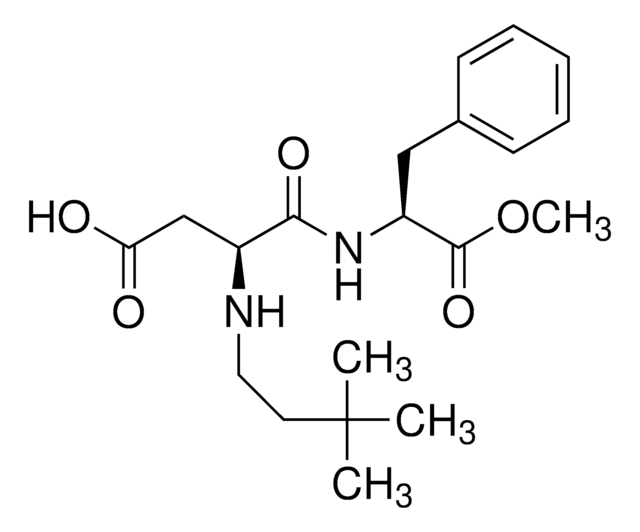Kluczowe dokumenty
59304
2-Propanol
≥99.5% (GC), for molecular biology, BioUltra
Synonim(y):
sec-Propyl alcohol, IPA, Isopropanol, Isopropyl alcohol
About This Item
Polecane produkty
Nazwa produktu
2-Propanol, BioUltra, for molecular biology, ≥99.5% (GC)
klasa czystości
Molecular Biology
for molecular biology
Poziom jakości
gęstość pary
2.1 (vs air)
ciśnienie pary
33 mmHg ( 20 °C)
44 mmHg ( 25 °C)
linia produktu
BioUltra
Próba
≥99.5% (GC)
Formularz
liquid
temp. samozapłonu
750 °F
granice wybuchowości
2.0-12.7 %, 93 °C
metody
DNA extraction: suitable
RNA extraction: suitable
zanieczyszczenia
DNases, none detected
RNases, none detected
insoluble matter, passes filter test
phosphatases, none detected
proteases, none detected
pozostałość po odparowaniu
≤0.001%
kolor
colorless
współczynnik refrakcji
n20/D 1.377 (lit.)
n20/D 1.378
bp
82 °C (lit.)
mp
−89.5 °C (lit.)
rozpuszczalność
water: soluble (completely)
gęstość
0.785 g/mL at 25 °C (lit.)
ślady kationów
Al: ≤0.5 mg/kg
Ba: ≤0.1 mg/kg
Bi: ≤0.1 mg/kg
Ca: ≤0.5 mg/kg
Cd: ≤0.05 mg/kg
Co: ≤0.02 mg/kg
Cr: ≤0.02 mg/kg
Cu: ≤0.02 mg/kg
Fe: ≤0.1 mg/kg
K: ≤0.5 mg/kg
Li: ≤0.1 mg/kg
Mg: ≤0.1 mg/kg
Mn: ≤0.02 mg/kg
Mo: ≤0.1 mg/kg
Na: ≤0.5 mg/kg
Ni: ≤0.02 mg/kg
Pb: ≤0.1 mg/kg
Sr: ≤0.1 mg/kg
Zn: ≤0.1 mg/kg
ciąg SMILES
CC(C)O
λ
neat
absorpcja UV
λ: 260 nm Amax: 0.02
λ: 280 nm Amax: 0.01
przydatność
suitable for molecular biology
InChI
1S/C3H8O/c1-3(2)4/h3-4H,1-2H3
Klucz InChI
KFZMGEQAYNKOFK-UHFFFAOYSA-N
Szukasz podobnych produktów? Odwiedź Przewodnik dotyczący porównywania produktów
Opis ogólny
Zastosowanie
- to precipitate genomic DNA extracted from flies
- to precipitate genomic DNA extracted from xenograft primary tumors and organs
- to immunoprecipitate 5-bromo-2-deoxyuridine (BrdU)
Działania biochem./fizjol.
Cechy i korzyści
- Suitable as a reagent for Biochemical and Molecular Biology Research
- BioUltra grade, meets strict purity standards through rigorous testing
- Free from DNase, NICKase, RNase, and Protease
- Tested to confirm low levels of heavy metal contamination, ensuring suitability for various applications
Inne uwagi
Hasło ostrzegawcze
Danger
Zwroty wskazujące rodzaj zagrożenia
Zwroty wskazujące środki ostrożności
Klasyfikacja zagrożeń
Eye Irrit. 2 - Flam. Liq. 2 - STOT SE 3
Organy docelowe
Central nervous system
Kod klasy składowania
3 - Flammable liquids
Klasa zagrożenia wodnego (WGK)
WGK 1
Temperatura zapłonu (°F)
53.6 °F - closed cup
Temperatura zapłonu (°C)
12.0 °C - closed cup
Środki ochrony indywidualnej
Eyeshields, Faceshields, Gloves, type ABEK (EN14387) respirator filter
Wybierz jedną z najnowszych wersji:
Masz już ten produkt?
Dokumenty związane z niedawno zakupionymi produktami zostały zamieszczone w Bibliotece dokumentów.
Klienci oglądali również te produkty
Nasz zespół naukowców ma doświadczenie we wszystkich obszarach badań, w tym w naukach przyrodniczych, materiałoznawstwie, syntezie chemicznej, chromatografii, analityce i wielu innych dziedzinach.
Skontaktuj się z zespołem ds. pomocy technicznej




